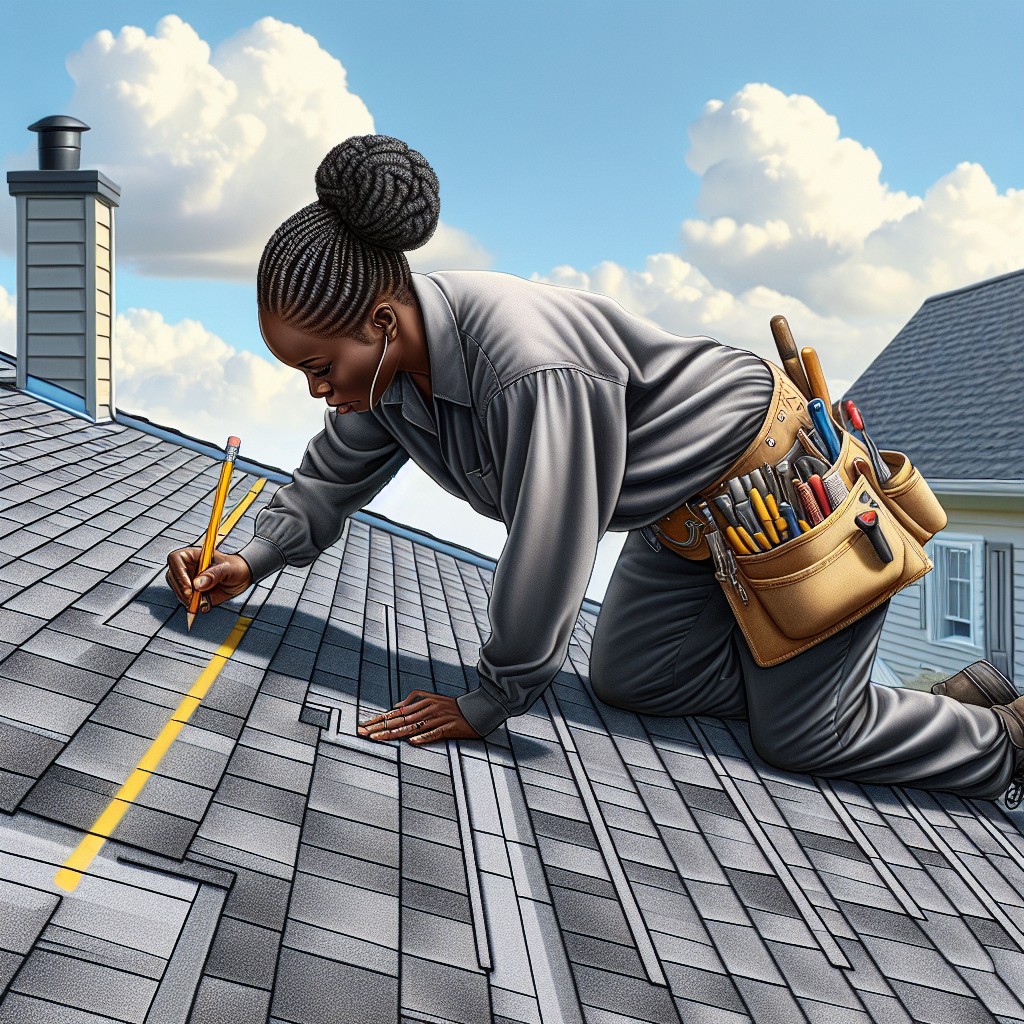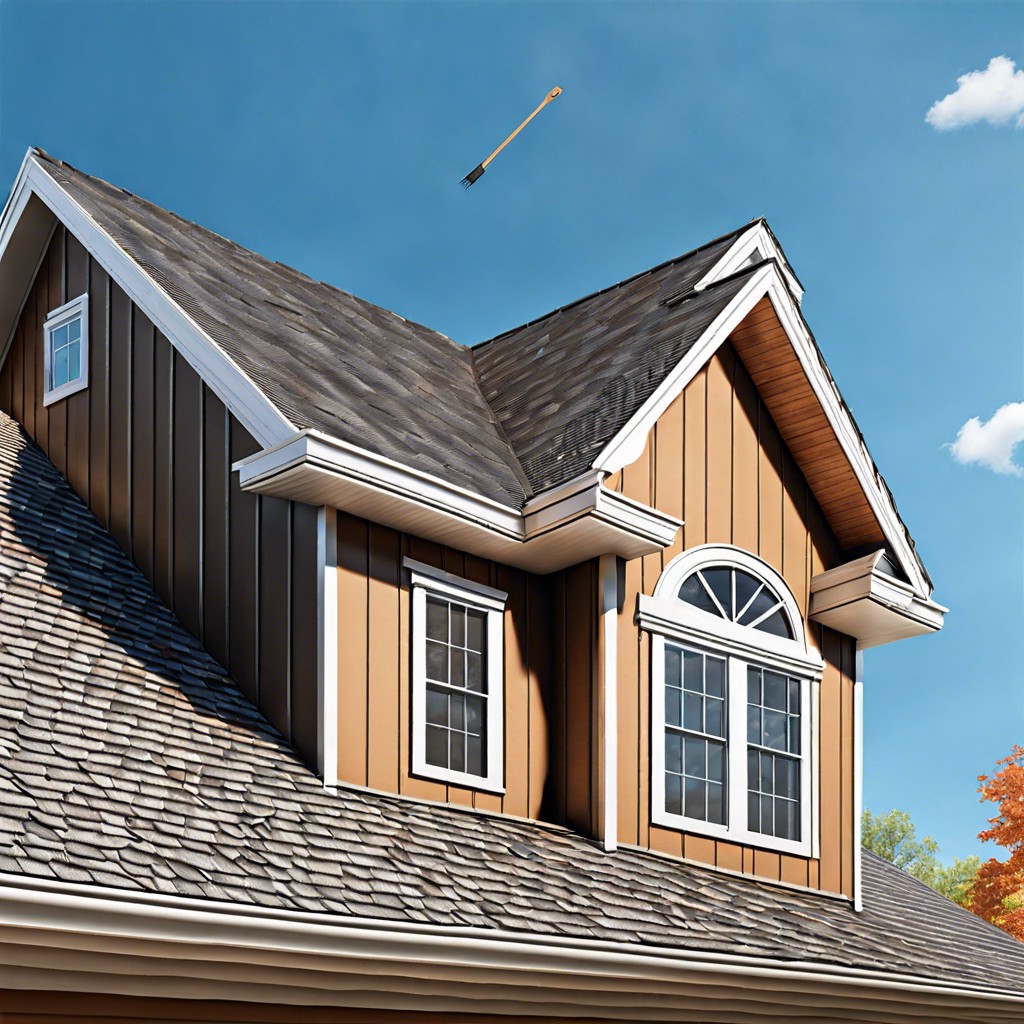Last updated on
This article provides a clear, step-by-step guide on how to correctly install a roof vent, ensuring efficient attic ventilation and prolonged roof life.
Key takeaways:
- Mark the Vent Spots with precision for optimal performance.
- Remove affected shingles carefully to avoid damage.
- Install the Roof Vent correctly using proper tools and techniques.
- Calculate the Amount of Ventilation Needed for efficient airflow.
- Consider hiring a Professional Roofer for proper installation and peace of mind.
Mark the Vent Spots

Selecting the appropriate location for your roof vents is crucial for optimal performance. Ideally, these spots should be evenly spaced along the roof ridge to facilitate uniform air circulation. The primary goal is to ensure vents are placed away from any roof obstructions, such as chimneys or pipes, to prevent airflow blockages.
Start by identifying the area on your roof that is hottest, as vent placement here allows for the escape of warm air, which in turn draws cooler air from eave vents. Use a measuring tape to center vents between rafters, and mark these spots with chalk for precision. It’s imperative to adhere to local building codes and manufacturer specifications for proper vent spacing, preventing possible structural issues or a voided warranty.
Remove the Affected Shingles
When removing shingles, work carefully to avoid damaging the roofing structure. Use a flat pry bar to gently uplift the edges of the shingles above the marked area. This will expose the nails, which you can then pull out with the pry bar or a nail puller.
Slide out the affected shingles with precision, making sure not to disturb the intact ones. If shingles are adhered together by asphalt sealant, softly heat the area with a heat gun to loosen the material. Remember to protect the underlying roof deck from any tools or heat to maintain its integrity.
Install the Roof Vent
Begin by positioning the vent over the pre-cut hole on the roof, ensuring it aligns properly. Slide the flange of the vent under the shingles above the hole, allowing for weatherproofing. Securing the flange in place requires roofing nails, which should be hammered into the roof at each corner. Apply roofing sealant around the edges of the flange to create an additional barrier against water infiltration.
Once the outer portion is fixed, proceed to the inside of the attic to attach the lower section of the vent. This involves connecting it to the ductwork or ensuring it opens into the attic space efficiently. Fasten this section with appropriate screws to maintain stability and an airtight connection.
Finally, check the vent’s operation if it has moving parts or verify proper air flow. Make any adjustments as necessary to ensure optimal performance. Remember, proper vent installation is crucial for the longevity of your roofing system and to avoid moisture-related issues within your home.
How to Calculate The Amount Of Ventilation You Need
Appropriate attic ventilation is crucial to the longevity of your roof and energy efficiency in your home. The general principle for adequate ventilation is 1 square foot of vent area for every 150 square feet of attic space. However, if your attic has a vapor barrier, you may be able to reduce this ratio to 1:300.
Firstly, evaluate the attic size by multiplying its length by its width. This will give you the attic floor area, which corresponds to the area under your roof.
Next, apply the 1:150 rule (or 1:300 with a vapor barrier) to calculate the total square footage of ventilation space needed. Divide this by 144 to convert it to square feet.
Remember, you need to split your ventilation evenly between intake and exhaust to ensure proper airflow. Intake vents are typically under the eaves in the soffits, while exhaust vents are placed near the ridge – the peak – of the roof. Ensure your calculations account for this balance to maintain an effective ventilation system.
Hiring a Professional Roofer to Get the Job Done
Selecting a licensed and insured roofing professional ensures the proper installation of your roof vent, which is critical for both function and safety. An expert roofer will conduct an accurate assessment of your roof’s structure and ventilation needs, ensuring compliance with building codes.
They bring specialized tools and possess the necessary expertise, reducing the risk of leaks or structural damage. Additionally, a professional can offer warranties on both materials and labor, providing you with peace of mind. It’s advisable to get quotes from several contractors to compare cost, experience, and reviews before making an informed decision.
Always check references and verify the roofer’s credentials to ensure quality workmanship.
FAQ
Can you install roof vents yourself?
Yes, you can install roof vents yourself if you have adequate roofing knowledge, with most jobs completed within a few hours.
What is the easiest roof vent to install?
The easiest roof vent to install is the soffit vent, favored for its simple placement under the roof’s overhang and effective protection from weather, outdoor debris and pests, along with enabling air flow into the attic.
How much does it cost to install a roof vent?
The cost of installing a roof vent typically ranges from $200 to $600, with the final price being influenced by factors such as the size, type of roof, and whether the vents are exposed or covered by shingles.
What are the essential tools needed for roof vent installation?
The essential tools needed for roof vent installation include a circular saw, reciprocating saw, roofing knife, caulk gun, chalk line, tape measure, pry bar, and hammer.
How long does it typically take to install a roof vent?
The installation of a roof vent typically takes between 2 to 4 hours depending on the roof complexity and the professional’s experience.
What safety considerations should be taken into account during roof vent installation?
During roof vent installation, safety considerations should primarily include using appropriate protective gear, ensuring stable footing by employing roof jacks, and using guards around skylights or openings to prevent falls.





